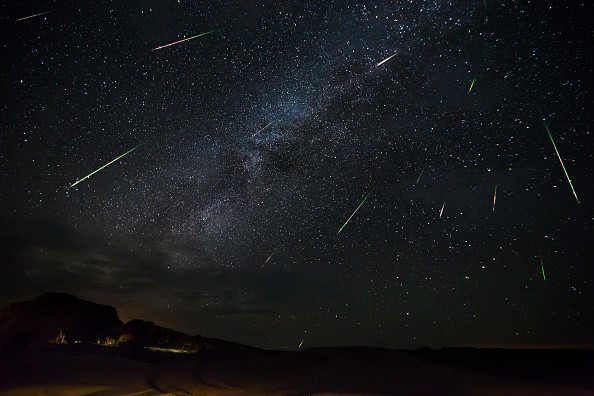The Perseids Meteor shower is an annual tradition for the world, as it so happens that the Earth is completing a full circle and going to the region of the old space rock that saw the destruction.
However, when one sees destruction, others see the beauty, and passing by in this region would ensure lights show in the sky for all. This upcoming mid-August, the Perseids Meteor Shower will yet again appear in the night sky, but there may be a significant obstacle for everyone.
Perseids Meteor Shower: Why is it Peaking at the Worst Time?

NASA said earlier this month that it is the Perseids Meteor Shower season again as August came in this year, but there is one significant catch for the world, and that is the Full Moon that will shine bright in the skies.
Yes, this is the same full moon that will be 2022's last Supermoon, and it is a significant obstacle that would reduce the meteor shower's lights show.
According to SciTechDaily, instead of the usual 50 to 60 meteors per hour, the world will only be seeing 10 to 20 meteors per hour come its peak.
The Perseids Meteor Shower is peaking in the coming week, particularly by August 12 to 13, and it will be a one-time event for this month to enjoy. It is one of the brightest light shows in the night sky.
Will the Public Still Enjoy the Perseids Meteor Shower Now?
The public may still enjoy the Perseids Meteor Shower for 2022 as it would go side by side with the Full Moon Supermoon of the year, being two cosmic events in one, available for all. It may not be the peak of the Supermoon come the Perseids, but it will still show its entire likeness and be closer to the Earth's orbit when the meteor showers are passing through.
The World's Meteor Shower Observations
The world is set to see more meteor showers for the latter half of the year, and despite going into it late this year, the world will still see more towards the end of 2022 for its stargazing activities.
The Perseids will begin the festivities now, but there are upcoming light shows from space for the coming months including that of the Orionids by October to November, Leonids by November, Geminids by December, and Ursids, also in December.
Perseids is an annual meteor shower show for the world to see, and it is one of the most significant ones as it brings a cluster of old space rock shards to present a showering effect lights show for the world. It is an annual tradition as it arrives every mid-August without any failure to see it in the sky.
This year might not be the best one for Perseids as it coincides with a significant cosmic event that the world already awaits, and it is August's Full Moon that would also be a Supermoon.
More importantly, it is the last Supermoon of the year, and while it reduces the showers that Perseids will bring for everyone, it may focus on two cosmic events at one to watch in the night sky.
Related Article: FCC's Decision Can Lead To More Satellite Productions? Commissioners Voted in Favor of ISAM
This article is owned by TechTimes
Written by Isaiah Richard
ⓒ 2025 TECHTIMES.com All rights reserved. Do not reproduce without permission.




